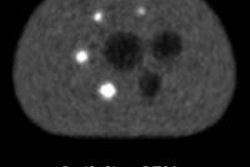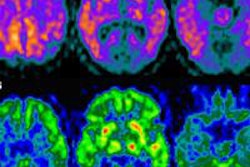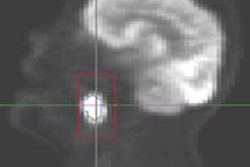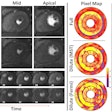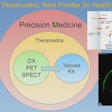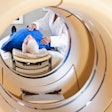Dear AuntMinnie Member,
Assuming you can afford the scanner, PET/MRI offers a number of advantages over PET/CT, including better resolution for the anatomic component of the hybrid exam and lower radiation exposure to patients by eliminating the need for a CT scan.
But researchers from Germany are discussing how they were able to drop the dose even further by timing their FDG acquisition protocols to the longer exam times required for MRI studies. They found that protocols that relied on less FDG activity but included longer acquisition times produced images that were just as good as those from conventional protocols.
While the study was performed in a lab environment with phantoms, it does point to an exciting future for low-dose hybrid imaging exams if it can be replicated in clinical situations. Read more by clicking here, or visit our Molecular Imaging Digital Community at molecular.auntminnie.com.
More support for DBT
We apologize if we're starting to sound like a broken record, but yet another clinical study has been released that points to the advantages of digital breast tomosynthesis (DBT), also known as 3D mammography.
A group from Texas led by Dr. Stephen Rose examined nearly 11,000 breast screening exams in women who received both DBT and conventional full-field digital mammography (FFDM). The researchers compared recall and cancer detection rates for FFDM in combination with DBT versus FFDM alone.
They found that DBT with FFDM produced higher sensitivity (both for all cancers and for invasive cancers) as well as lower recall rates -- results that echo findings in other recent studies. Learn more by clicking here, or visit our Women's Imaging Digital Community at women.auntminnie.com.
Another sign of imaging's drop
Another common refrain you've been hearing lately is the declining utilization of advanced imaging services in the past few years. Well, another study released this month confirms the drop, at least with respect to imaging in the emergency department (ED).
Researchers from Brigham and Women's Hospital in Boston tracked imaging utilization from 1993 to 2012. While utilization grew markedly in the ED through 2007, it's been declining since then, according to the group.
They say the drop could be due to rising awareness of radiation dose, coupled with efforts to use imaging more appropriately. Read more by clicking here.





